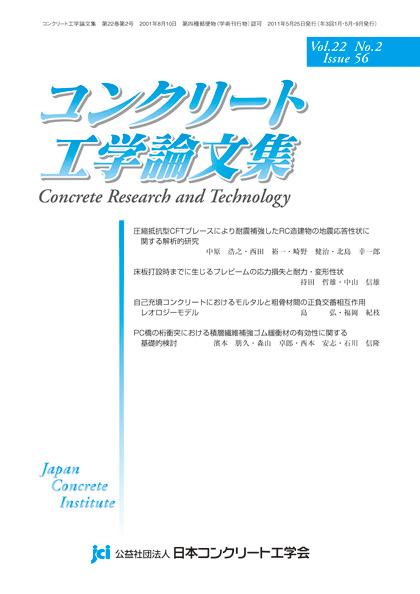All issues

Volume 26
Displaying 1-2 of 2 articles from this issue
- |<
- <
- 1
- >
- >|
-
Taito Miura, Yasuhiko Sato, Hikaru Nakamura2015 Volume 26 Pages 1-9
Published: 2015
Released on J-STAGE: March 15, 2015
JOURNAL FREE ACCESSIn this study, meso-scale thin mortar specimens were immersed in a sulfuric acid solution for 60 days and then subjected to three-point bending tests and shear tests to clarify the mechanical behaviors of mortar in containing cement hydrates transubstantiated under sulfate attack. In particular, tensile behaviors, namely elastic modulus, tensile strength and fracture energy, and shear strength, were determined from the load-displacement curves using back analysis and shear tests, respectively. Following the mechanical tests, chemical analyses were also carried out to clarify how the amount of hydrates, which were quantities of CH and C-S-H, the existence of precipitates, porosity and pore volume distribution affect mechanical characteristics. As a result, it was found that the relationships between physico-chemical properties and elastic modulus and tensile strength differ from the relationships between physico-chemical properties and fracture energy and shear strength. Furthermore, the applicability of the proposed model based on the relationships between porosity and strength was verified through comparison of the calculated and experimental results.View full abstractDownload PDF (1650K) -
Hideyuki Utsumi, Takehiro Misaka, Wataru Moteki2015 Volume 26 Pages 11-19
Published: 2015
Released on J-STAGE: November 15, 2015
JOURNAL FREE ACCESSThis study proposes a simplified prediction model of internal relative humidity during self-desiccation in hardened cement pastes at early ages. The proposed model is composed of the pore-structure development model based on the water-cement system, the water adsorption isotherm model, and the hydration process model. The mathematical expression of the final form of the model consists of algebraic equations with some parameters that were derived from concrete engineering. The proposed model can be easily calculated using spreadsheet software. The calculation results of the proposed model agree well with the experimental results of relative humidity in hardened cement pastes with a low water cement ratio under sealed curing and constant temperature curing conditions.View full abstractDownload PDF (1414K)
- |<
- <
- 1
- >
- >|